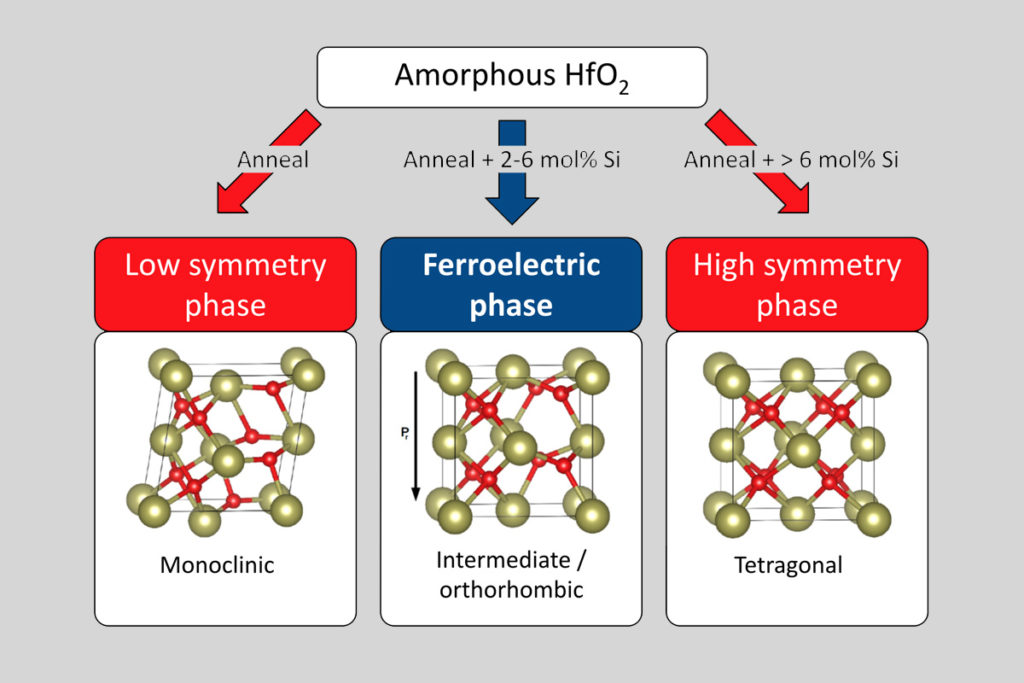FMC has patented technology that leverages the ferroelectric properties of hafnium oxide. In its orthorhombic, non-centrosymmetric crystal phase see Fig.1), the oxygen atoms in HfO2 can occupy two stable positions, shifting either upward or downward in response to an externally applied electric field. Depending on the position of the oxygen atoms, a permanent electric dipole is created, which can either point upward or downward. This enables the storage of two binary states, allowing for bulk memory behavior controlled solely by the application of an electric field.
The ferroelectric effect in hafnium oxide was an unexpected discovery, prompting extensive research to prove its potential as a memory material. The results of this research are shown in Fig.2. It has been demonstrated that this material exhibits exceptional temperature stability, endurance, retention, and switching speed characteristics similar to traditional ferroelectrics. However, unlike traditional ferroelectrics, this material is 100% CMOS compatible.
FMC memory technology is characterized by:
- Low power write and read operations
- High speed / high data throughput
- Wide temperature range compliance (industrial/automotive)

Fig. 1: Transformation of amorphous hafnium oxide into its known crystalline states and into the newly discovered ferroelectric phase

Fig. 2: Memory properties of ferroelectric hafnium oxide as derived from experiments and expected material limits.

